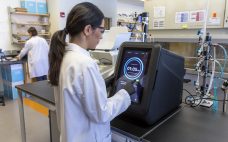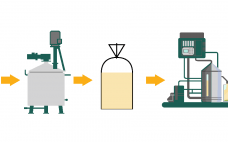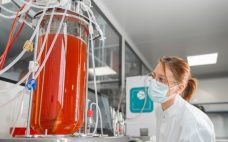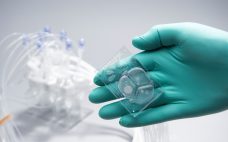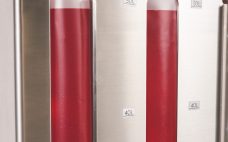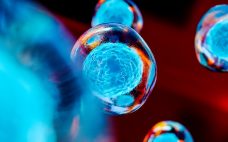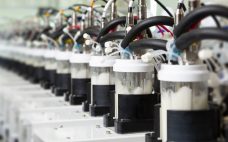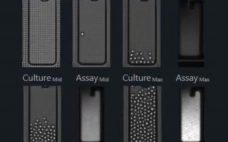This webcast features: Graziella Piras, Segment Marketing Director, Bioprocessing, Marketing, 908 Devices Cell culture media analysis is a critical piece of the bioprocessing puzzle. From starting material and throughout the growth cycle, cell culture media analysis gives you a clearer, fuller picture of how amino acids, vitamins, and biogenic amines impact cell health and productivity. This Ask the Expert session will outline two of the key applications of cell media analysis in the production of biologics: media quality control (QC)…
Upstream
Process Intensification: Ways to Achieve Extreme Biologics Volumetric Productivity
This webcast features: Xiao Pan, Director of Process R&D, GenScript ProBio The trend of biologics titer increase brings significant cost reduction. Process intensification needs to be introduced and applied to improve the titer performance and lower the COGS. Besides fed batch, GenScript ProBio has developed process intensification solutions including high-density inoculation and intensified perfusion. Through this webinar, you will learn the following information: The scope and trend of process intensification Intensified perfusion development roadmap Case study of process intensification Just…
The Importance of Real-Time CO2 Monitoring in Cell Culture
This webcast features: Oliver Berteau, Pharmaceutical & Biotech Industry Manager, METTLER TOLEDO Process Analytics Inline dissolved CO2 (dCO2) measurement and monitoring during cell culture offers significant benefits for process control impacting productivity and quality attributes. Real-time dCO2 measurement complements routine dissolved CO2 measurements with a blood gas analyzer (BGA) during preclinical and commercial operations. Animal and insect cells are more or less sensitive to the level of dCO2 during cell culture. Toxic below and beyond specific thresholds, dCO2 is also…
The Critical Steps for Protein Therapeutic Potency Assay Development
This webcast features: Jennifer Lawson, PhD, Global Product Manager, Cell Banking and Testing, Sartorius Potency assays are an important part of the drug development process and are required throughout the lifetime of the product. The potency assay needs to correlate with the mechanism of action and provide an indication of stability. With these requirements comes a myriad of challenges in the development process, especially as therapeutics become increasingly complex. Assay development should be stepwise, starting with proof of concept and…
“Breez”ing the Way into Process Development with Perfusion Technology
This webcast features: Kevin Lee, Co-Founder, Principal Scientist, Erbi Biosystems The priority of speed to market is often at odds with issues around development resources, facility space, and infrastructure for both development and manufacturing. Continuous bioprocessing provides solutions for many of these challenges in certain applications, but to deliver on this promise we need fit-for-purpose tools and technologies to enable process development and provide reliable transfer to commercial manufacturing. The migration to continuous processes in process development is further hindered…
Automation of a Next-Generation Sequencing Method for Cell Line Species Identity
This webcast features: Dr. Christine Mitchell, Scientific Fellow, Analytical Development, WuXi Advanced Therapies As the gene and cell therapy market continues to expand, affordability and accelerated turnaround time (TAT) become increasingly important in the industry. Despite the escalating diversity of therapeutic modalities, the criticality of a robust cell bank remains a pivotal starting point for many biological products. The integrity of species identity for cell lines is a critical quality attribute for many cell and gene therapies, and with regulatory…
Thermo Scientific DynaDrive SUB: Perfusion Application and Customer Experience Highlights
This webcast features: Kristin O’Neill, Principle Scientist, and William Tran, Sr. Bioprocess Engineer, Merck & Co., Inc., and Kevin Mullen, Senior Product Manager, Thermo Fisher Scientific As the demand for single-use technologies increases in terms of performance, efficiency, and ease-of-use, Thermo Fisher Scientific has introduced a next-generation bioreactor to the biopharma industry: The Thermo Scientific HyPerforma DynaDrive Single-Use Bioreactor (SUB). Building on our extensive experience, as well as nearly two decades of end-user feedback, the HyPerforma DynaDrive SUB employs a…
Stem Cell Derived Exosome Production in Stirred-Tank Bioreactors
This webcast features: AurĂ©lie Tacheny, Project Manager and Application Specialist, and Jorge Escobar Senior Research Scientist, Applications Lab, Eppendorf Exosomes are a population of naturally occurring, mobile, membrane-limited, 30–100 nm in diameter, extracellular vesicles containing a large number of proteins, lipids, messenger, and micro-RNAs. It was shown that they play a role in the mediation of intercellular communication, the modulation of immune-regulatory processes, tumor metabolism, and regenerative as well as degenerative processes. In recent years, there has been increasing interest…
New Data: A Better Way to Run CHO Cell Culture Experiments
This webcast features: Deborah Pascoe, PhD, Vice President of Operations, Culture Biosciences The bench-scale bioreactor has been the workhorse of Chinese hamster ovary (CHO) cell culture process development for decades. However, running benchtop bioreactors requires significant resources, infrastructure, and staffing. Tubing assembly, sterilization, calibration, and other setup activities can take hours to days. Tear down, cleaning, and deactivation are similarly burdensome. There are potentially large associated costs to prepare or purchase media, carry seed trains, and maintain facilities. Most critically,…
De-Risking INDs with Unrivaled Monoclonality Assurance in Cell Line Development
This webcast features: Tanner Nevill, Vice President, Program Management, Berkeley Lights Monoclonality assurance is a central regulatory requirement for all cell lines manufacturing biologic therapies. Imaging is currently the gold standard for confirming that production cell lines originate from a single cell. However, conventional well plate imaging is very labor-intensive and prone to error due to the presence of “ghost” cells and debris that are difficult to differentiate from cells. Opto™ cell line development (CLD) on the Berkeley Lights Beacon® system provides…

